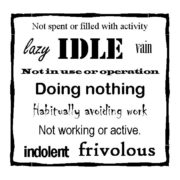6 Antidotes to Worry
“I’ve had a lot of worries in my life, most of which never happened.”
― Mark Twain
Studies on worry vary in results, but most show that about 85% of the things we worry about are simply that, worry.
So why do we worry? Often, it’s a first reaction to a perceived conflict, problem or internal fear. Many feel that the amount of worrying equates with the amount of caring. Perhaps we convince ourselves that a positive outcome will be more feasible if we dwell on the problem. Give it the time and worry it deserves. It’s tough to break the worry habit if you believe that your worrying serves a positive purpose. Once you realize that worrying is the problem, not the solution, you can regain control of your worried mind.
Worrying is like praying for the worst outcome.
Worry gives power to the problem, not the solution. It’s also not good for our brains. The hormones that flood the brain during any episode of worry have been linked to a damaging loss of brain mass and other unwanted physical consequences. Other studies have shown that people with the highest levels of the hormone cortisol (known as the stress hormone) suffered the most memory loss and damage to some parts of the brain. The part of the brain that escalates fear, the amygdala, causes a cortisol spike to occur as you sink deeper into worry. Worry begets worry, creating a vicious cycle that only escalates as we give in to the habit.
I have a mantra that I repeat frequently, “I could choose peace instead of this.”
Solutions are more apt to arise naturally out of a peaceful state. The question is, how do you get into that peaceful state? Below are 6 options.
1.Challenge your worries: Is it true? Do you have evidence that what your worried about will most likely happen? Where would you be without that worry? What would you say to a friend that had this worry?
2.Imagine: It does not help to envision the worst outcome, in fact, what does help is to envision the best outcome. Use your imagination to create the ideal solution to whatever is worrying you.
3.Journal: Write down a brief description of your worry. As time go by, you’ll have evidence that the majority of your worries never materialize. Typically, even the worst-case scenario isn’t as overwhelming as we make it out to be in our minds. There are often numerous potential outcomes, some of which may be good, or at least neutral. Worriers have a habit of seeing only the negative possibilities. Retrain your brain to create new neural pathways that are solution oriented rather than reinforcing the negative feedback loop.
4.Breathe: Worry and deep breathing don’t co-exist well. During moments of increased stress, we tend to take very shallow breaths. Deep breathing immediately calms the body and mind.
5.Change your state: Distract yourself- clean a closet, look up a new recipe, take a walk, move! Get your mind to stop spiraling down the rabbit hole.
6.Practice Presence: This is where the mindfulness aspect of presence has helped me. Practice patience, trust, acceptance, and letting go. In my Practicing Presence and Mindfulness workshops I teach these attributes and relate them to the countless everyday worries that we bump into every day.
In organizations everywhere, there is an undercurrent of collective worry. To explore a workshop geared to reframe these worries contact me.







Leave a Reply
Want to join the discussion?Feel free to contribute!